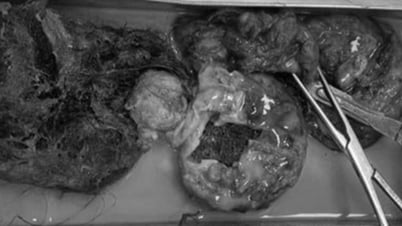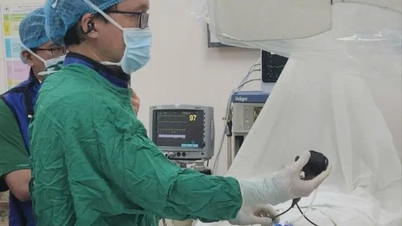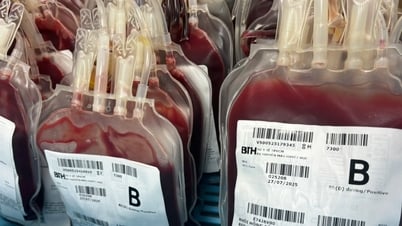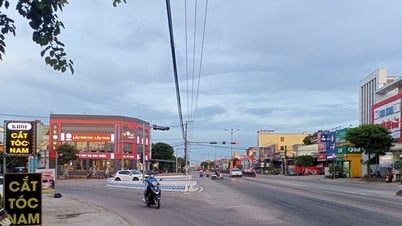The patient had no identification, no one accompanying him, and had multiple abrasions on his body. The emergency admission procedure was immediately activated. The cause of this condition was the result of using laughing gas.
On July 4, Master - Specialist Doctor 2 Nguyen Phu Quoc, in charge of Deputy Head of Department of Internal Medicine - Transplant Immunology, People's Hospital 115 said that the patient was admitted in a state of profound cognitive disorder, the hospital urgently coordinated with the Emergency Center 115 and the Korean Consulate in Vietnam to verify the identity and contact relatives. The patient had acute neurological symptoms such as disorientation of space and time, unconscious movements and was at risk of harming himself and those around him. In addition, the patient also had symptoms of acute kidney injury.
Doctors had difficulty in obtaining the patient's medical history before admission. A hospital-wide consultation with the participation of many specialists, based on biochemical indicators, showed mild metabolic acidosis, transient renal impairment, and laboratory and imaging results that allowed the exclusion of central nervous system infections, metabolic disorders, traumatic brain injury, and stroke. Along with indirect testimony from the Korean Embassy staff, combined with collected risk factors, the patient was diagnosed with N₂O gas poisoning (laughing gas).

Effects of inhaling N2O gas on the body
PHOTO: BVCC
After 13 days of inpatient treatment, including behavioral control, fluid infusion, and close monitoring, the patient's renal function recovered well, his consciousness gradually improved, and his vital signs became more stable. This is a remarkable result of a closely coordinated multidisciplinary medical system, especially in the context of the patient having no initial medical data upon admission.
Harmful effects of high dose laughing gas
Master - Specialist Doctor 2 Nguyen Phu Quoc said that laughing gas is a colorless gas with a slightly sweet smell, legally used in dentistry and obstetrics as a mild anesthetic. However, when used for recreational purposes, N₂O becomes an extremely dangerous hallucinogen, especially when inhaled directly in high doses or in a closed space.
Mechanistically, N₂O gas inactivates the enzyme methionine synthase, inhibits DNA synthesis, and affects the process of myelin formation in the peripheral and central nervous system. As a result, users may experience neurological symptoms such as paresthesia, limb weakness, loss of balance, memory loss, and even posterior spinal cord degeneration on MRI.
In addition, N₂O gas can also cause acute mental disorders, auditory hallucinations, paranoia, agitation or delirium, respiratory failure and cardiac arrest, arrhythmia, increased risk of sudden death when combined with other stimulants such as alcohol, cocaine, ketamine..., affecting the hematopoietic system.
Source: https://thanhnien.vn/nguoi-dan-ong-bat-tinh-tren-duong-do-ngo-doc-bong-cuoi-185250704153835736.htm





![[Photo] Brilliant red of the exhibition 95 years of the Party Flag lighting the way before the opening](https://vphoto.vietnam.vn/thumb/1200x675/vietnam/resource/IMAGE/2025/8/27/e19d957d17f649648ca14ce6cc4d8dd4)

![[Photo] Prime Minister Pham Minh Chinh chairs meeting of National Steering Committee on International Integration](https://vphoto.vietnam.vn/thumb/1200x675/vietnam/resource/IMAGE/2025/8/26/9d34a506f9fb42ac90a48179fc89abb3)
![[Photo] Prime Minister Pham Minh Chinh receives CEO of Samsung Electronics](https://vphoto.vietnam.vn/thumb/1200x675/vietnam/resource/IMAGE/2025/8/26/373f5db99f704e6eb1321c787485c3c2)



























































































Comment (0)